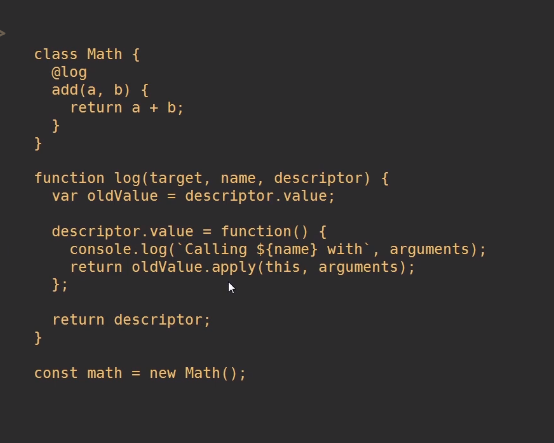对象的解构赋值:
示例代码: 对象的解构,数组的解构,以及扩展运算符…,数组使用…扩展运算符,则新对象为数组;对象使用扩展运算符,则新对象为对象;
class App extends Component{constructor(props){super(props);this.state = {name: 'React & ES6',lesson: '6',teacher: {teacherName: 'David',age: 26},skills: ['Vue', 'React', 'NodeJS', 'JS', 'Angular'],friend: {name: 'Jim'}};}render(){let {name,lesson,teacher: {teacherName,age},skills: [s1, s2, s3, ...rest],friend: {name: fName}} = this.state;// rest为一个数组return (<div><div>{name} - {lesson}</div><div>{teacherName} - {age}</div><div>{s1} - {s2} - {s3}</div><div>{rest}</div><div>{fName}</div></div>);}}
扩展运算符示例代码:
class User extends Component {render(){let {name,age,lesson,...rest} = this.props;return (<div {...rest}>{name} - {age} - {lesson}</div>);}}class App extends Component{constructor(props){super(props);this.state = {name: 'David',age: 26,lesson: 'React'};}render(){let {name,age,lesson} = this.state;// rest为一个数组return (<div><User name={name} age={age} lesson={lesson} style={{color: 'red'}} onClick={(e)=> alert('Hello')}/></div>);}}
类的继承:
子类中可以通过super.render() 来调用父类的render方法,来渲染父组件。
class LoadingComponent extends Component {constructor(props){super(props);this.state = {loading: false};}render(){let {loading} = this.state;return (<div>{loading ? 'loading...' : ''}</div>);}showLoading(){this.setState({loading: true});}hideLoading(){this.setState({loading: false});}}class App extends LoadingComponent{render(){return (<div>{super.render()}APP</div>);}componentDidMount(){this.showLoading();setTimeout(()=>{this.hideLoading();}, 3000);}}
Proxy:
代码示例:
对象的代理,示例中展示了对对象get,set的监控。
let obj = new Proxy({a: 10,b: 20}, {get: function(target, key) {console.log('get key', key);return target[key] * 10;},set: function(target, key, value) {console.log('set key', key);return Reflect.set(target, key, value);}});window.obj = obj;
控制台里测试:
obj.aget key a100obj.a = 11set key a11obj.aget key a110
装饰器Decorator:
方法装饰器: 在下面的例子中,当调用Math的add方法时,会先调用装饰器方法log。
组件装饰器:
需要在User Setting里设置 “javascript.implicitProjectConfig.experimentalDecorators”: true, 来关闭warning。
示例中的称为反向继承,组件装饰器的这种写法比继承写法更加的优雅。
function loading(com){class LoadingComponent extends com{constructor(props){super(props);this.state = {loading: false};}render(){let {loading} = this.state;return (<div>{super.render()}{loading ? 'loading...' : ''}</div>);}showLoading(){this.setState({loading: true});}hideLoading(){this.setState({loading: false});}}}@loadingclass App extends Component{render(){return (<div>APP</div>);}componentDidMount(){this.showLoading();}}
async,await 和promise
示例代码: axiso是网络请求库,需要先安装。
import axiso from 'axiso';class App extends Component{render(){return (<div>APP</div>);}componentDidMount(){axiso.get('http://localhost:7777/api').then((res) => {console.log(res.data);});}}
第二种写法:
async写在异步方法前,await 后的方法需要返回的是一个promise对象。
import axiso from 'axiso';class App extends Component{render(){return (<div>APP</div>);}async componentDidMount(){let res = await axiso.get('http://localhost:7777/api');console.log(res.data);}}
webpack在编译的时候,上面的代码会被编译成下面:
把await后面的代码放进then里面了。
import axiso from 'axiso';class App extends Component{render(){return (<div>APP</div>);}async componentDidMount(){axiso.get('http://localhost:7777/api').then(() => {console.log(res.data);});}}

